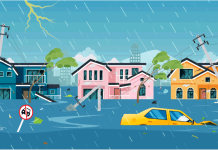
Every contact center should have a comprehensive recovery plan for the “typical” disaster. Whether caused by fire, flood, earthquake or other similar event, being prepared for the loss of the use of a building is a fundamental planning requirement. Contact centers are the faces of our organizations—there is simply too much at stake to ignore this activity. Not every worst-case scenario, though, fits the definition of a “traditional” disaster. Many events can take shape that will not bring down a building, yet can have a disastrous impact on performance results, customer loyalty, employee satisfaction and/or revenue.
The first inclination with a PR disaster is to think of it as a temporary (though potentially significant) increase in call volume, but that is only a small part of the problem. Here is a more complete overview of the impact of a PR nightmare for the contact center:
- An increase in call volume that is nearly impossible to predict in terms of size and duration
- A likely increase in talk time
- A substantial increase in the emotional level of callers
- Concern and second-guessing from agents about their employer
The first step? Separate the calls. Assigning a different toll-free number is a great way, if you can do it. Of course, you have very little control in a PR disaster, so other media outlets may wind up publicizing your regular number anyway. Even if you can segment only a portion of these calls, though, the efforts are worthwhile. Since the segment will be very specific, you may be able to borrow staff from other parts of the organization for staffing.
Whether you can segment the calls or not, there are other considerations in this type of situation:
- Significantly strengthen your escalation resources. Depending on how emotional the situation gets, some percentage of customers will not be satisfied until they get transferred to someone with “more authority.” While your first response to that request will be to attempt to handle the call at the agent level, you will only fan the flames if you make it too difficult for callers to get to another resource.
- Resist the temptation to throw supervisors and managers on the front lines. They will be busy enough with escalated calls, upset staff and managing the communication flow to make any dent in the queue.
- It is counter-intuitive, but you actually need to schedule more off-phone time for agents. They will need to vent, and they very well may have suggestions on how to improve the situation. And if they know they have time every day to meet to discuss the situation, they will be more likely to stay plugged in when scheduled for phone time.
- Do whatever you can to get company leadership in front of the agents. That may not be possible in some instances, especially where the contact center is far removed geographically from the corporate office. Do your best to work around those obstacles with video conferences or any other tool at your disposal. Executive visibility is crucial at this time.
When the contact volume subsides, you need to fully tend to concerns agents have with the company. Lingering doubts about the integrity of the organization, the quality of products, and the commitment level to customers and employees can only lead to poor performance results. Think of the drop-off in contact volume as the beginning of the end, not the final step.



